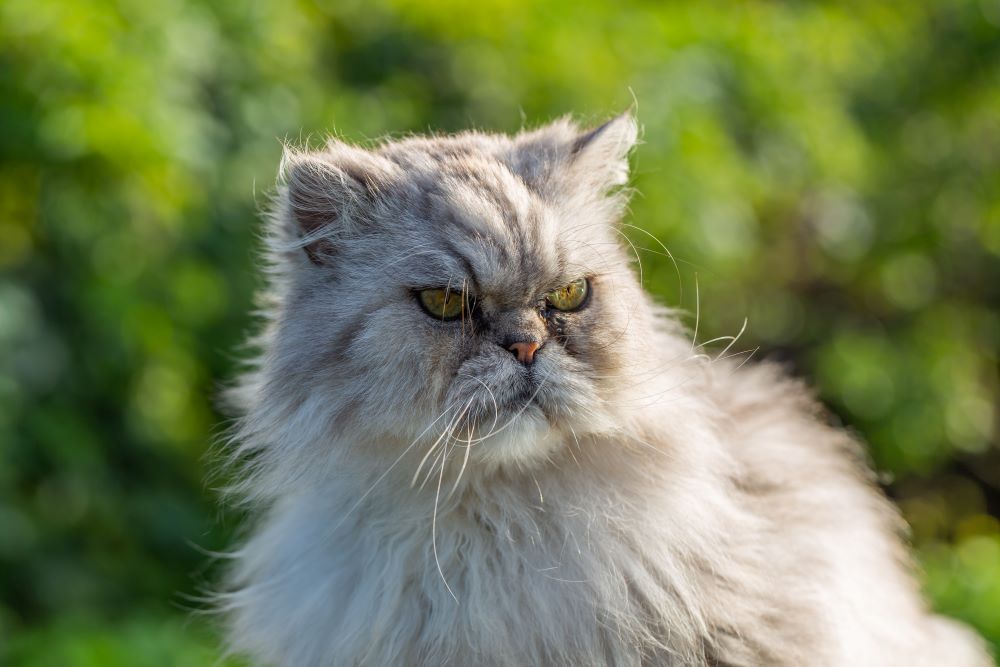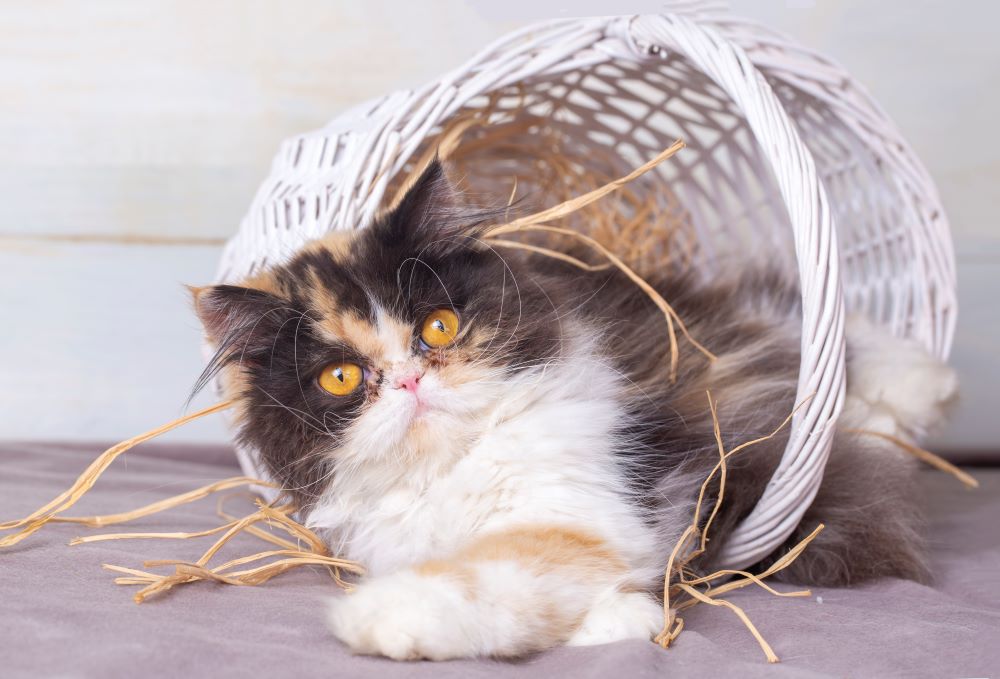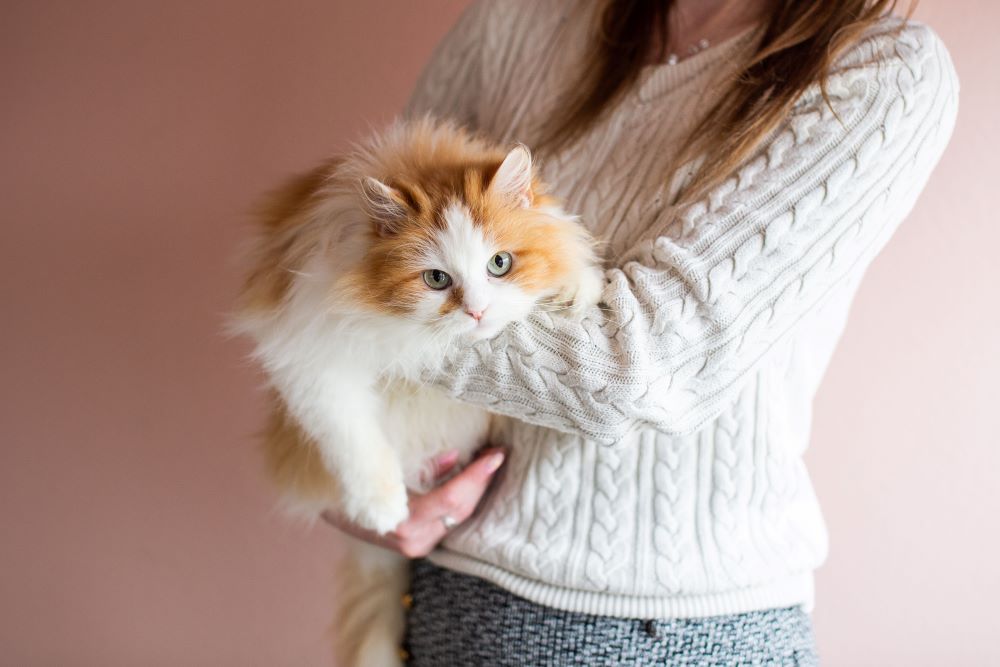Get Pet Insurance for your Cat & Dog

Zero
Documentation
Quick
Claim Process
Affordable
Premium
Terms and conditions apply*
- {{species}}
- {{indoorOutdoor}}
- {{suminsured}}
Persian Cat Breed Characteristics & Information

In the world of feline elegance, Persian cats reign supreme with their luxurious coats, distinctive features, and regal demeanour. Renowned for their long, flowing fur and captivating personalities, Persian cats have captured the hearts of cat enthusiasts for centuries.
In this article, we will explore the enchanting world of Persian cats, delving into their history, distinctive characteristics, grooming needs, etc.
What is the Origin of Persian Cats?
Originating in Persia (modern-day Iran), Persian cats can trace their lineage back to the 1600s. Highly esteemed for their luxurious fur and captivating personalities, Persian cats were revered by aristocrats and royalty.
Over the centuries, Persians became cherished companions worldwide, captivating hearts with their distinctive appearance and calm nature.
Today, Persian cats stand as a testament to a rich heritage and continue to reign as one of the most adored and iconic breeds in the world of feline companionship.
What are the Characteristics of Persian Cats?

Persian cats are easily identified by their distinctive attributes and unique traits. Some unique characteristics of the cats include:
- Life Span: These cats have a longer life span. Typically, they have a lifespan ranging from 12 to 16 years. But with proper care and nutrition, they may live a little longer also.
- Height: Persian cats are not too long in their size. They are of medium size and have an average height ranging from 10 to 15 inches (25.4 cm-38.1 cm) at the shoulder.
- Colour and Coat: Persian cats come in a wide variety of different colours and patterns, including solid, bicolour, and tricolour. Their long, luxurious coat requires regular grooming to prevent matting and maintain its health.
- Weight: Adult Persian cats generally weigh between 3.1 to 5.4 kg, with males tending to be larger than females. Proper diet and exercise are essential to maintaining a healthy weight.
- Personality and Behaviour: Persian cats are known for their calm and gentle behaviour. They are not as energetic as some other breeds. They form strong bonds with their owners, seeking attention and enjoying human companionship.
- Living Condition: Persian cats adapt well to indoor living and thrive in a comfortable and quiet home environment. Their long fur may make them more susceptible to temperature extremes, so maintaining a moderate climate is important.
- Temperament: Persian cats are known for their calm and gentle temperament. They tend to be laid-back and enjoy a serene environment. Their relaxed nature makes them well-suited for indoor living.
- Breed Group: Persian cats belong to the long-haired cat breed group, known for their distinctive, flowing coats. They are one of the most popular and recognisable cat breeds globally.
What are the Ways to Train Persian Cats?
Training Persian cats requires patience and an understanding of their calm and gentle nature. Here are some points on how to train Persian cats effectively:
- Interactive Play: Use interactive play as a training tool. Engage your Persian cat with toys that encourage movement and mental stimulation. This not only reinforces positive behaviours but also provides exercise.
- Introduce Cat Furniture: Persians enjoy vertical spaces. Introduce cat trees or shelves to encourage climbing and exploration. This provides mental stimulation and a designated space for them to scratch.
- Litter Box Training: Persian cats generally adapt well to litter box training. Ensure the litter box is easily accessible and kept clean. Reward them for using the litter box appropriately.
- Short, Positive Sessions: Keep training sessions short and positive. Persian cats may not have the same energy levels as some other breeds, so brief, engaging sessions are more effective than prolonged ones.
- Positive Reinforcement: Use positive reinforcement techniques. Reward desired behaviours with treats, praise, or affection. This encourages your Persian cat to associate good behaviour with positive outcomes.
- Socialisation: Expose your Persian cat to different people, environments, and experiences to promote socialisation. This helps them become more adaptable and comfortable in various situations.
What are the Health Problems with Persian Cats?
Persian cats, with their distinctive features and long fur, are prone to certain health issues. Following are the seven common health problems associated with them:
- Polycystic Kidney Disease (PKD): Persian cats are genetically predisposed to PKD, a condition where fluid-filled cysts form in the kidneys. Regular veterinary check-ups, including ultrasounds, can aid in early detection and management.
- Gastrointestinal Issue: Persian cats may experience gastrointestinal problems, including vomiting and hairballs. Regular grooming to minimise ingesting loose fur and providing a suitable diet can help address these issues.
- Hypertrophic Cardiomyopathy (HCM): While not exclusive to Persians, HCM is a heart condition that can affect them. Regular veterinary check-ups, including heart screenings, can aid in early detection and management.
- Eye Problem: Persian cats are prone to eye conditions such as entropion (inward rolling of the eyelids) and excessive tearing. Regular cleaning of the eye area and veterinary attention for any signs of discomfort are crucial.
- Skin Condition: Their long, dense fur makes Persian cats susceptible to skin conditions, including fungal or bacterial infections. Regular grooming helps prevent matting and allows for the early detection of any skin abnormalities.
- Respiratory Issue: The brachycephalic (flat-faced) structure of Persian cats can lead to respiratory difficulties, including issues like brachycephalic airway syndrome. This can result in laboured breathing, especially in warmer weather.
- Obesity: The sedentary nature of Persian cats, coupled with their long fur, may contribute to obesity. Monitoring their diet, providing regular exercise, and avoiding excessive treats are essential for weight management.
What are the Ways to Take Care of Persian Cats?

Persian cats are a high-maintenance breed that requires much care. Here are essential methods to ensure the optimal care of Persian cats:
- Diet and Nutrition: Provide a nutritionally balanced diet tailored to the specific needs of Persian cats. Choose high-quality cat food, such as Purina, that includes whole meat, organs, fish, high protein, and low to no carbs.
- Feeding: An adult Persian cat should consume 200-300 calories daily, divided into 2 meals per day. However, a Persian kitten should consume 250-350 calories daily, divided into 3-4 meals per day.
- Regular Grooming: Persian cats have long, luxurious fur that requires daily grooming to prevent matting and tangling. Brush their coat gently to remove loose hair and reduce the risk of skin issues.
- Eye Care: Due to their facial structure, Persians may be prone to tear staining. Wipe their eyes daily with a damp cloth to prevent staining and reduce the risk of eye infections.
- Dental Hygiene: Combat dental problems by establishing a routine for brushing your Persian cat's teeth. Dental treats and toys designed for oral health can also contribute to maintaining their dental hygiene.
- Hydration: Ensure your Persian cat stays hydrated, especially if they consume dry cat food. Consider incorporating wet food into their diet or providing a cat water fountain to encourage water intake.
- Temperature Control: Persian cats are intuitive and may be sensitive to extreme temperatures. Ensure a comfortable living environment, avoiding excessively hot or cold conditions.
Persian cats, known for their luxurious coats and gentle personalities, thrive on the love and care provided by their owners. By incorporating proper grooming practices, ensuring a well-balanced diet, and fostering a stimulating living space, Persian cats can lead happy, healthy lives as cherished members of the family.
Their elegance and affectionate nature make them not only iconic in appearance but also delightful and loving companions in the world of feline enthusiasts.












